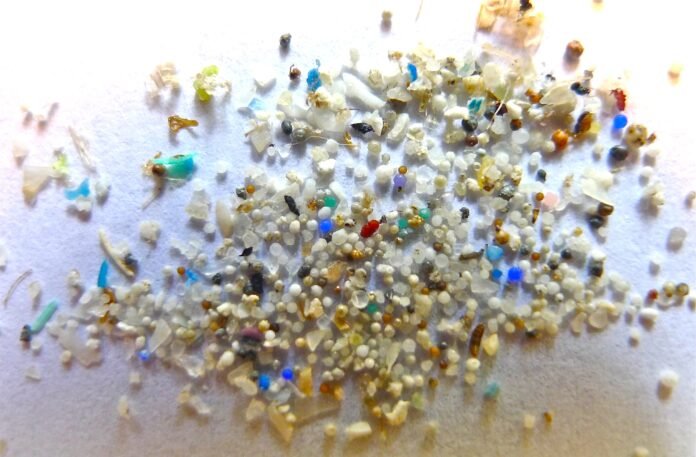Microplastics have been detected for the first time in human ovarian follicular fluid—a discovery that may have serious implications for women’s fertility and reproductive health. The peer-reviewed study, published in Ecotoxicology and Environmental Safety, found microplastic particles in the ovarian fluid of 14 out of 18 women undergoing assisted reproductive treatment at a fertility clinic in Salerno, Italy.
Follicular fluid plays a crucial role in the development of eggs, providing nutrients and biochemical signals essential for oocyte maturation. The contamination of this sensitive fluid with microplastic particles raises fresh concerns over the unseen and potentially harmful presence of plastics in the human reproductive system.
“This discovery should serve as an important warning signal about the invasiveness of these emerging contaminants in the female reproductive system,” said Luigi Montano, the study’s lead author and a researcher at the University of Rome.
The Pervasive Reach of Microplastics
Microplastics—tiny plastic fragments less than 5mm in size—are now found across the planet, from the peaks of Mount Everest to the depths of the Mariana Trench. They also infiltrate human bodies, entering primarily through food, water, and even the air we breathe.
READ MORE: Can We Trust Our Eyes Anymore? The Dark Side of Apple’s New AI Clean Up Tool
Recent studies have already documented microplastics in human blood, urine, lungs, breast milk, and even placental tissue. This new discovery adds yet another part of the human body to the growing list of contaminated areas, making the case for increased concern even stronger.
Montano’s research builds on his broader project examining the relationship between microplastics and human fertility. He has previously found plastic particles in human urine and semen, adding further weight to the hypothesis that these materials may be contributing to a global decline in reproductive health.
Toxic Compounds Hitching a Ride
The danger of microplastics lies not only in their physical presence but also in the 16,000 chemicals they may carry. Many of these are known endocrine disruptors, such as bisphenol A (BPA), phthalates, and per- and polyfluoroalkyl substances (PFAS)—all of which are associated with increased risks of cancer, hormonal disruption, reproductive problems, and neurological effects.
These plastic particles act like “Trojan horses,” Montano explained, carrying dangerous compounds past the body’s natural defenses, including the blood-brain barrier and the placental barrier. Their ability to reach the ovaries now indicates a direct threat to women’s reproductive capabilities.
Impacts on Fertility: What We Know So Far
The findings echo and build upon earlier animal studies. For instance, research involving mice has shown that microplastics can alter ovarian tissue and reduce oocyte maturation and fertilization capacity. These changes directly affect fertility outcomes and could lead to long-term reproductive health issues.
Although men appear to be more susceptible to microplastic-related toxicity—particularly in terms of falling sperm counts—women are not immune. “There’s growing concern that exposure to these contaminants could explain part of the fertility struggles we’re seeing, especially in polluted areas,” Montano said.
The new study notes a possible correlation between microplastic concentration in follicular fluid and reproductive challenges faced by the women studied, although it emphasizes the need for further research to determine causality.
Calls for Quantification and Further Research
Other experts in the field agree the discovery is significant but caution that much remains to be understood. Dr. Xiaozhong Yu, a microplastics researcher at the University of New Mexico, described the study as a “very important finding,” but emphasized that future work must focus on quantifying exposure levels and identifying the thresholds at which microplastics begin causing harm.
“This is the work of the next phase – we need to quantify,” Yu said. His team is currently conducting broader epidemiological studies to understand how microplastic exposure might differ across populations and affect health outcomes over time.
Montano’s group is also pushing forward with new research, exploring how lifestyle changes—such as reducing plastic use in the kitchen and adopting organic diets—might help lower microplastic levels in the body.
Can We Avoid Microplastics?
Completely avoiding microplastics may be impossible, but experts agree that individuals can reduce exposure. Here are some practical tips supported by current research:
- Avoid heating food or liquids in plastic containers. Heat accelerates chemical leaching.
- Do not use single-use paper coffee cups. Many are lined with plastic that sheds micro- and nanoparticles when filled with hot liquids.
- Steer clear of plastic tea bags, which can release billions of microplastic particles per cup.
- Use utensils made of wood or stainless steel. Plastic utensils can leach toxins, especially when exposed to heat.
- Choose fresh, unpackaged foods and reduce your use of plastic storage containers.
- Eat organic when possible, as some pesticides themselves are microplastic-based or contain such particles.
A Broader Public Health Wake-Up Call
Montano believes the findings should serve as a wake-up call for both the scientific community and public health officials.
“We are only scratching the surface of how widespread and invasive microplastics are in our lives,” he said. “But the reproductive system—especially one as delicate as the female ovarian environment—is the last place we want to see this kind of contamination.”
While this study offers no immediate answers or treatment options, it does provide something increasingly urgent: a clear direction for future research, policy regulation, and public education.
If nothing else, Montano says, the results should spur greater public and governmental scrutiny into the manufacturing, use, and disposal of plastic products, particularly those that directly interact with food and beverages.
Looking Ahead
As concern over global fertility rates grows, the discovery of microplastics in follicular fluid underscores how modern environmental pollutants may be playing a more direct role than previously believed. It also adds new urgency to questions around plastic regulation, public health policy, and the safety of everyday products.
“We’ve now seen microplastics in nearly every organ system,” said Montano. “But this might be the one that finally gets people to pay attention.”
